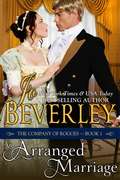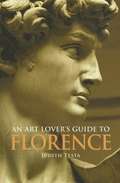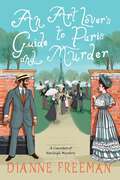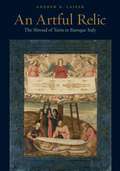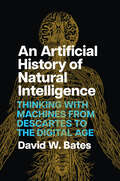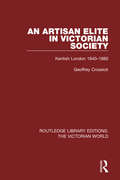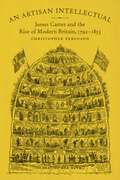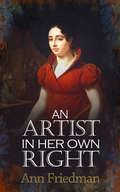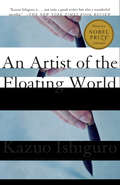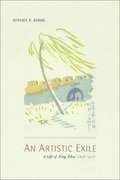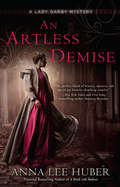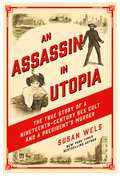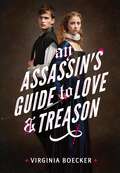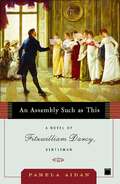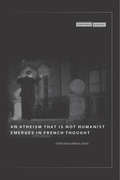- Table View
- List View
An Arranged Marriage: Regency Romance (The Company of Rogues Series #1)
by Jo Beverley"Jo Beverley strains the boundaries of political correctness . . . There is no denying Ms. Beverley is a master storyteller and perhaps because of this political incorrectness she delivers a powerfully fresh stage for her story." ~Tara A. GreenRuined through her vile brother's schemes, Eleanor Chivenham is offered rescue by marriage to a rake with an infamous French mistress. Eleanor accepts, determined to treat the arranged marriage with cool dignity.Then she meets Nicholas Delaney. Not only does he stir her senses, but the trouble and pain beneath his smooth exterior reaches her heart.Nicholas is indeed troubled. While serving his country by seducing secrets out of a French spy, he is persuaded to marry Eleanor to protect his family's honor. But such chivalry runs counter to his carefully wrought rogue image, and extends the life-threatening plots shadowing him to Eleanor.To assist, Nicholas re-assembles the Company of Rogues, a schoolboy group he started years before. But not even they can dampen Eleanor's fighting wit that is quickly unmasking their enemy and testing Nicholas' formidable will.From The Publisher: Author Jo Beverley is known for her consumate attention to historical detail that wisks the reader back in time to a near first-hand experience. Fans of Regency romance and historical British fiction set in the 19th century, as well as readers of Jess Michaels, Mary Balogh, Christi Caldwell, Stephanie Laurens, Madeline Hunter and Mary Jo Putney will want to read every book by Jo Beverley. Best Regency Novel, Romantic TimesBookrak BestsellerRITA, finalist"A splendid love story... a veritable feast of delight. Bravo!" ~Romantic Times
An Art Lover's Guide to Florence
by Judith TestaThe sheer number and proximity of works of painting, sculpture, and architecture in Florence can be so overwhelming that Florentine hospitals treat hundreds of visitors each year for symptoms brought on by trying to see them all, an illness famously identified with the French author Stendhal.
An Art Lover's Guide to Paris and Murder (A Countess of Harleigh Mystery #7)
by Dianne FreemanFilled with Victorian-era intrigue for readers of Rhys Bowen, Deanna Raybourn, Tasha Alexander, and Julia Seales, Dianne Freeman&’s Agatha Award-winning series takes a delightful jaunt to the City of Light as Frances Wynn, the American-born Countess of Harleigh, encounters a murder scene at the Paris Exposition.Former Countess of Harleigh, Frances Hazelton, is among a throng of pleasure seekers and art lovers in the City of Lights. But what catches her eye most is the art of murder . . . Frances and her husband, George, have two points of interest in Paris. One is an impromptu holiday to visit the Paris Exposition. The other is personal. George&’s Aunt Julia has requested her nephew&’s help in looking into the suspicious death of renowned artist Paul Ducasse. Though Julia is not entirely forthcoming about her reasons, she is clearly a woman mourning a lost love. At the exposition, swarming with tourists, tragedy casts a pall on the festivities. A footbridge collapses. Julia is among the casualties. However, she was not just another fateful victim. Julia was stabbed to death amid the chaos. With an official investigation at a standstill, George and Frances realize that to solve the case they must dig into Julia&’s life—as well as Paul&’s—and question everything and everyone in Julia&’s coterie of artists and secrets. They have no shortage of suspects. There is Paul&’s inscrutable widow, Gabrielle. Paul&’s art dealer and manager, Lucien. Julia&’s friend Martine, a sculptress with a jealous streak. And art jurist, Monsieur Beaufoy. The investigation takes a turn when it&’s revealed that George has inherited control of Julia&’s estate—and another of her secrets. While George investigates, Frances safeguards their new legacy, and is drawn further into danger by a killer determined to keep the past buried.
An Artful Corpse (Art of Murder Mysteries #3)
by Helen A. HarrisonOne artist. One student. One deadly mystery.When Regionalist painter Thomas Hart Benton's corpse is discovered behind the easels of Manhattan's famed art school, whispers in the art community say he had it coming. As Benton's list of enemies lengthens to include League instructors, Vietnam War protesters, and members of Andy Warhol's entourage, one art student is ultimately pinned for the crime. The only problem: the suspect has vanished.Why would an art student murder Benton? And if he were innocent, why would he run? When TJ Fitzgerald, son of Detective Juanita Diaz and Captain Brian Fitzgerald of the NYPD, discovers his classmate is the prime suspect, he uses his investigative skills to try and clear his name. But as TJ and his girlfriend work to unravel the clues, he begins to wonder if the police got it wrong and one secret may be the key to it all...
An Artful Relic: The Shroud of Turin in Baroque Italy
by Andrew R. CasperIn 1578, a fourteen-foot linen sheet bearing the faint bloodstained imprint of a human corpse was presented to tens of thousands of worshippers in Turin, Italy, as one of the original shrouds used to prepare Jesus Christ’s body for entombment. From that year into the next century, the Shroud of Turin emerged as Christianity’s preeminent religious artifact. In an unprecedented new look, Andrew R. Casper sheds new light on one of the world’s most famous and controversial religious objects.Since the early twentieth century, scores of scientists and forensic investigators have attributed the Shroud’s mysterious images to painterly, natural, or even supernatural forces. Casper, however, shows that this modern opposition of artifice and authenticity does not align with the cloth’s historical conception as an object of religious devotion. Examining the period of the Shroud’s most enthusiastic following, from the late 1500s through the 1600s, he reveals how it came to be considered an artful relic—a divine painting attributed to God’s artistry that contains traces of Christ’s body. Through probing analyses of materials created to perpetuate the Shroud’s cult following—including devotional, historical, and theological treatises as well as printed and painted reproductions—Casper uncovers historicized connections to late Renaissance and Baroque artistic cultures that frame an understanding of the Shroud’s bloodied corporeal impressions as an alloy of material authenticity and divine artifice. This groundbreaking book introduces rich, new material about the Shroud’s emergence as a sacred artifact. It will appeal to art historians specializing in religious and material studies, historians of religion, and to general readers interested in the Shroud of Turin.
An Artful Relic: The Shroud of Turin in Baroque Italy
by Andrew R. CasperWinner of the 2022 Roland H. Bainton Book Prize from the Sixteenth Century Society & ConferenceIn 1578, a fourteen-foot linen sheet bearing the faint bloodstained imprint of a human corpse was presented to tens of thousands of worshippers in Turin, Italy, as one of the original shrouds used to prepare Jesus Christ’s body for entombment. From that year into the next century, the Shroud of Turin emerged as Christianity’s preeminent religious artifact. In an unprecedented new look, Andrew R. Casper sheds new light on one of the world’s most famous and controversial religious objects.Since the early twentieth century, scores of scientists and forensic investigators have attributed the Shroud’s mysterious images to painterly, natural, or even supernatural forces. Casper, however, shows that this modern opposition of artifice and authenticity does not align with the cloth’s historical conception as an object of religious devotion. Examining the period of the Shroud’s most enthusiastic following, from the late 1500s through the 1600s, he reveals how it came to be considered an artful relic—a divine painting attributed to God’s artistry that contains traces of Christ’s body. Through probing analyses of materials created to perpetuate the Shroud’s cult following—including devotional, historical, and theological treatises as well as printed and painted reproductions—Casper uncovers historicized connections to late Renaissance and Baroque artistic cultures that frame an understanding of the Shroud’s bloodied corporeal impressions as an alloy of material authenticity and divine artifice. This groundbreaking book introduces rich, new material about the Shroud’s emergence as a sacred artifact. It will appeal to art historians specializing in religious and material studies, historians of religion, and to general readers interested in the Shroud of Turin.
An Artificial History of Natural Intelligence: Thinking with Machines from Descartes to the Digital Age
by David W. BatesA new history of human intelligence that argues that humans know themselves by knowing their machines. We imagine that we are both in control of and controlled by our bodies—autonomous and yet automatic. This entanglement, according to David W. Bates, emerged in the seventeenth century when humans first built and compared themselves with machines. Reading varied thinkers from Descartes to Kant to Turing, Bates reveals how time and time again technological developments offered new ways to imagine how the body’s automaticity worked alongside the mind’s autonomy. Tracing these evolving lines of thought, An Artificial History of Natural Intelligence offers a new theorization of the human as a being that is dependent on technology and produces itself as an artificial automaton without a natural, outside origin.
An Artisan Elite in Victorian Society: Kentish London 1840-1880 (Routledge Library Editions: The Victorian World #9)
by Geoffrey CrossickFirst published in 1978. Mid-Victorian Britain was relatively stable in comparison with the turbulent period that preceded it, and that stability is in part explained by the emergence of an artisan elite with a specific relationship to the society around it. This book examines that elite: its clubs and societies, co-operatives and building societies; its values and ideology, challenging the notion that these artisans directly absorbed middle-class values; its politics, tracing the evolution from Chartism through the Reform League and on to a radical liberalism which existed in constant tension with the local liberal middle class. A careful reconstruction of the social, political and industrial life of these artisans is set within the context of the local communities, and their understanding of the mid-Victorian society in which they lived is seen as the explanation for their values and activities. This title makes a major contribution towards our understanding of the nineteenth-century working class.
An Artisan Intellectual: James Carter and the Rise of Modern Britain, 1792-1853
by Christopher FergusonIn An Artisan Intellectual, Christopher Ferguson examines the life and ideas of English tailor and writer James Carter, one of countless and largely anonymous citizens whose lives dramatically transformed during Britain’s long march to modernity. Carter began his working life at age thirteen as an apprentice and continued to work as a tailor throughout the first half of the nineteenth century, first in Colchester and then in London. As the Industrial Revolution brought innovations to every aspect of British life, Carter took advantage of opportunities to push against the boundaries of his working-class background. He supplemented his income through his writing, publishing often unsigned books, articles, and poems on subjects as diverse as religion, death, nature, aesthetics, and theories of civilization. Carter’s words give us a fascinating window into the revolutionary forces that upended the world of ordinary citizens in this era and demonstrate how the changes in daily life impacted personal experiences and intellectual pursuits as well as labor practices and living and working environments. Ferguson deftly explores a forgotten tailor’s varied responses to the many transformations that produced the world’s first modern society.
An Artist in Her Own Right
by Ann Marti FriedmanSet in France during the Napoleonic period, this is the story of Augustine Defresne (1789-1842), the wife and widow of the artist antione Gros, painter of Jaffa, and an artist herself. It takes her from her teenage years through to her old age. As little is known about her life this is a fictional biography, based on extensive research, and describes how difficult it was for a female artist to play her trade and gain recognition.
An Artist in her Own Right
by Ann Marti FriedmanSet in France during the Napoleonic period, this is the story of painter Augustine Dufresne (1789-1842) the wife and widow of artist Antione-Jean Gros, painter of Jaffa.An Artist in Her Own Right explores the journey from Augustine's childhood during the French Revolution, through her artistic training and marriage during the Napoleonic era, and looks at the triumphs and challenges she faced in her life and art during the turbulent years that followed. The novel views this intensely masculine time through a woman's eyes.As little is known about Augustine’s life, this is a fictional biography based on the author's extensive research into the art and artists of the 18th and 19th centuries.
An Artist in her Own Right
by Ann Marti FriedmanSet in France during the Napoleonic period, this is the story of painter Augustine Dufresne (1789-1842) the wife and widow of artist Antione-Jean Gros, painter of Jaffa.An Artist in Her Own Right explores the journey from Augustine's childhood during the French Revolution, through her artistic training and marriage during the Napoleonic era, and looks at the triumphs and challenges she faced in her life and art during the turbulent years that followed. The novel views this intensely masculine time through a woman's eyes.As little is known about Augustine’s life, this is a fictional biography based on the author's extensive research into the art and artists of the 18th and 19th centuries.
An Artist of the Floating World (Vintage International)
by Kazuo IshiguroFrom the winner of the Nobel Prize in Literature and author of the Booker Prize–winning novel The Remains of the Day In the face of the misery in his homeland, the artist Masuji Ono was unwilling to devote his art solely to the celebration of physical beauty. Instead, he put his work in the service of the imperialist movement that led Japan into World War II. Now, as the mature Ono struggles through the aftermath of that war, his memories of his youth and of the "floating world"—the nocturnal world of pleasure, entertainment, and drink—offer him both escape and redemption, even as they punish him for betraying his early promise. Indicted by society for its defeat and reviled for his past aesthetics, he relives the passage through his personal history that makes him both a hero and a coward but, above all, a human being.
An Artistic Exile: A Life of Feng Zikai (1898-1975)
by Geremie R. BarmeThis book, a blend of biography and criticism, tells the story of Feng Zikai (1898-1975), one of the most gifted and important artists to emerge from the politically tumultuous decades of the 1920s and 1930s. Geremie R. Barme provides a closely woven parallel history, that of the life of writer-artist Feng, who was also an essayist and a translator, and that of China's turbulent twentieth century.
An Artless Demise (A Lady Darby Mystery #7)
by Anna Lee HuberLady Darby returns to London with her new husband, Sebastian Gage, but newlywed bliss won't last for long when her past comes back to haunt her in the latest exciting installment in this national bestselling series.November 1831. After fleeing London in infamy more than two years prior, Lady Kiera Darby's return to the city is anything but mundane, though not for the reasons she expected. A gang of body snatchers is arrested on suspicion of imitating the notorious misdeeds of Edinburgh criminals, Burke and Hare--killing people from the streets and selling their bodies to medical schools. Then Kiera's past--a past she thought she'd finally made peace with--rises up to haunt her. All of London is horrified by the evidence that "burkers" are, indeed, at work in their city. The terrified populace hovers on a knife's edge, ready to take their enmity out on any likely suspect. And when Kiera receives a letter of blackmail, threatening to divulge details about her late anatomist husband's involvement with the body snatchers and wrongfully implicate her, she begins to apprehend just how precarious her situation is. Not only for herself, but also her new husband and investigative partner, Sebastian Gage, and their unborn child. Meanwhile, the young scion of a noble family has been found murdered a block from his home, and the man's family wants Kiera and Gage to investigate. Is it a failed attempt by the London burkers, having left the body behind, or the crime of someone much closer to home? Someone who stalks the privileged, using the uproar over the burkers to cover his own dark deeds?
An Asian Frontier: American Anthropology and Korea, 1882–1945 (Critical Studies in the History of Anthropology)
by Robert OppenheimIn the nineteenth century the predominant focus of American anthropology centered on the native peoples of North America, and most anthropologists would argue that Korea during this period was hardly a cultural area of great anthropological interest. However, this perspective underestimates Korea as a significant object of concern for American anthropology during the period from 1882 to 1945—otherwise a turbulent, transitional period in Korea’s history. An Asian Frontier focuses on the dialogue between the American anthropological tradition and Korea, from Korea’s first treaty with the United States to the end of World War II, with the goal of rereading anthropology’s history and theoretical development through its Pacific frontier. Drawing on notebooks and personal correspondence as well as the publications of anthropologists of the day, Robert Oppenheim shows how and why Korea became an important object of study—with, for instance, more published about Korea in the pages of American Anthropologist before 1900 than would be seen for decades after. Oppenheim chronicles the actions of American collectors, Korean mediators, and metropolitan curators who first created Korean anthropological exhibitions for the public. He moves on to examine anthropologists—such as Aleš Hrdlicka, Walter Hough, Stewart Culin, Frederick Starr, and Frank Hamilton Cushing—who fit Korea into frameworks of evolution, culture, and race even as they engaged questions of imperialism that were raised by Japan’s colonization of the country. In tracing the development of American anthropology’s understanding of Korea, Oppenheim discloses the legacy present in our ongoing understanding of Korea and of anthropology’s past.
An Assassin in Utopia: The True Story of a Nineteenth-Century Sex Cult and a President's Murder
by Susan WelsThis true crime odyssey explores a forgotten, astonishing chapter of American history, leading the reader from a free-love community in upstate New York to the shocking assassination of President James Garfield.It was heaven on earth—and, some whispered, the devil&’s garden. Thousands came by trains and carriages to see this new Eden, carved from hundreds of acres of wild woodland. They marveled at orchards bursting with fruit, thick herds of Ayrshire cattle and Cotswold sheep, and whizzing mills. They gaped at the people who lived in this place—especially the women, with their queer cropped hair and shamelessly short skirts. The men and women of this strange outpost worked and slept together—without sin, they claimed. From 1848 to 1881, a small utopian colony in upstate New York—the Oneida Community—was known for its shocking sexual practices, from open marriage and free love to the sexual training of young boys by older women. And in 1881, a one-time member of the Oneida Community—Charles Julius Guiteau—assassinated President James Garfield in a brutal crime that shook America to its core. An Assassin in Utopia is the first book that weaves together these explosive stories in a tale of utopian experiments, political machinations, and murder. This deeply researched narrative—by bestselling author Susan Wels—tells the true, interlocking stories of the Oneida Community and its radical founder, John Humphrey Noyes; his idol, the eccentric newspaper publisher Horace Greeley (founder of the New Yorker and the New York Tribune); and the gloomy, indecisive President James Garfield—who was assassinated after his first six months in office. Juxtaposed to their stories is the odd tale of Garfield&’s assassin, the demented Charles Julius Guiteau, who was connected to all of them in extraordinary, surprising ways. Against a vivid backdrop of ambition, hucksterism, epidemics, and spectacle, the book&’s interwoven stories fuse together in the climactic murder of President Garfield in 1881—at the same time as the Oneida Community collapsed. Colorful and compelling, An Assassin in Utopia is a page-turning odyssey through America&’s nineteenth-century cultural and political landscape.
An Assassin's Guide to Love and Treason
by Virginia BoeckerPhilippa Gregory meets Mr. and Mrs. Smith in this witty and thrilling action-adventure novel of star-crossed assassins in Elizabethan England. <P><P>When Lady Katherine's father is killed for being an illegally practicing Catholic, she discovers treason wasn't the only secret he's been hiding: he was also involved in a murder plot against the reigning Queen Elizabeth I. With nothing left to lose, Katherine disguises herself as a boy and travels to London to fulfill her father's mission, and to take it one step further--kill the queen herself. <P><P>Katherine's opportunity comes in the form of William Shakespeare's newest play, which is to be performed in front of Her Majesty. But what she doesn't know is that the play is not just a play. It's a plot to root out insurrectionists and destroy the rebellion once and for all.The mastermind behind this ruse is Toby Ellis, a young spy for the queen with secrets of his own. When Toby and Katherine are cast opposite each other as the play's leads, they find themselves inexplicably drawn to one another. But the closer they grow, the more precarious their positions become. And soon they learn that star-crossed love, mistaken identity, and betrayal are far more dangerous off the stage than on.
An Assembly Such as This: A Novel of Fitzwilliam Darcy, Gentleman
by Pamela AidanThe first installment in Pamela Aidan&’s irresistible trilogy, An Assembly Such As This takes us into the world of Jane Austen&’s Fitzwilliam Darcy.&“She is tolerable; but not handsome enough to tempt me.&” So begins the timeless romance of Fitzwilliam Darcy and Elizabeth Bennet in Pride and Prejudice. Jane Austen's classic novel is beloved by millions, but little is revealed in the book about the mysterious and handsome hero, Mr. Darcy. And so the question has long remained: Who is Fitzwilliam Darcy? In An Assembly Such as This, Pamela Aidan finally answers that long-standing question. In this first book of her Fitzwilliam Darcy, Gentleman trilogy, she reintroduces us to Darcy during his visit to Hertfordshire with his friend Charles Bingley and reveals Darcy's hidden perspective on the events of Pride and Prejudice. As Darcy spends more time at Netherfield supervising Bingley and fending off Miss Bingley's persistent advances, his unwilling attraction to Elizabeth grows—as does his concern about her relationship with his nemesis, George Wickham. Setting the story vividly against the colorful historical and political background of the Regency, Aidan writes in a style comfortably at home with Austen but with a wit and humor very much her own. Aidan adds her own cast of fascinating characters to those in Austen's original, weaving a rich tapestry from Darcy's past and present. Austen fans and newcomers alike will love this new chapter of the most famous romance of all time.
An Assessment of Undersea Weapons Science and Technology
by Technology Committee for Undersea Weapons ScienceAn Assessment of Undersea Weapons Science and Technology
An Assessment of the Global Impact of the Financial Crisis
by Philip Arestis Rogéo Sobreira Joséuis OreiroThis topical volume analyzes the impact of the 2008 financial crisis. It considers the origins and explanations of the current crisis, examines the regulatory implications and, with specific focus on developing countries, it provides a strategy for economic growth that can guarantee financial stability in the future.
An Atheism That Is Not Humanist Emerges in French Thought
by Stefanos GeroulanosIf the 19th century was marked by a "Death of God," than the 20th century evolution of French philosophical and political thought can be said to be marked by the "Death of Man," in that humanism (placing the human at the center of understandings of knowledge, thought, and ethics) came to be seen by many as inextricably tied to some of the worst disasters of the modern era. Geroulanos (modern European intellectual history, New York U. ) reconstructs the development of this intellectual trend in France during the second quarter of the 20th century, arguing that it should be understood in terms of a synthesis of the interconnected movements of the development of an anti-humanist atheism, the emergence of a negative philosophical anthropology, and the elaboration of critiques of humanism. Annotation ©2010 Book News, Inc. , Portland, OR (booknews. com)
An Atheist's History of Belief: Understanding Our Most Extraordinary Invention
by Matthew KnealeWhat first prompted prehistoric man, sheltering in the shadows of deep caves, to call upon the realm of the spirits? And why has belief thrived since, shaping thousands of generations of shamans, pharaohs, Aztec priests and Mayan rulers, Jews, Buddhists, Christians, Nazis, and Scientologists?As our dreams and nightmares have changed over the millennia, so have our beliefs. The gods we created have evolved and mutated with us through a narrative fraught with human sacrifice, political upheaval and bloody wars.Belief was man's most epic labor of invention. It has been our closest companion, and has followed mankind across the continents and through history.
An Atlas and Survey of Latin American History
by Michael LaRosa German R. MejiaAn Atlas and Survey of Latin American History provides a comprehensive, accessible introduction to both the human and physical geography of Latin America and the social, cultural, political and economic events that have defined its history. Featuring 77 maps and accompanying text, the book provides topical overviews of the key developments and movements in Latin American history, ranging from the earliest human settlement to the present day. The fully updated second edition includes a new chapter on Latin America in the 21st century, featuring maps and essays on topics ranging from sports and telenovelas to the growth of the Latin American middle class and the rise and ebb of left-leaning political movements. Highly readable and beautifully designed, An Atlas and Survey of Latin American History 2e remains an engaging resource for students and others interested in Latin American history, politics, and culture.
An Atlas of Countries That Don't Exist: A Compendium of Fifty Unrecognized and Largely Unnoticed States
by Nick MiddletonA “fascinating” journey to little-known and contested lands around the globe, from Tibet to the Isle of Man to Elgaland-Vargaland (Geographical Magazine).What is a country? Acclaimed travel writer and Oxford geography don Nick Middleton brings to life the origins and histories of fifty states that, lacking international recognition and United Nations membership, exist on the margins of legitimacy in the global order. From long-contested lands like Crimea and Tibet to lesser-known territories such as Africa’s last colony and a European republic that enjoyed independence for a single day, Middleton presents fascinating stories of shifting borders, visionary leaders, and “forgotten” peoples. “Engrossing . . . You’ll not find Middle-earth, Atlantis or Lilliput inside, but you will find something just as intriguing . . . sure to prompt discussions about what makes a country a ‘real country.’” —Seattle Times
